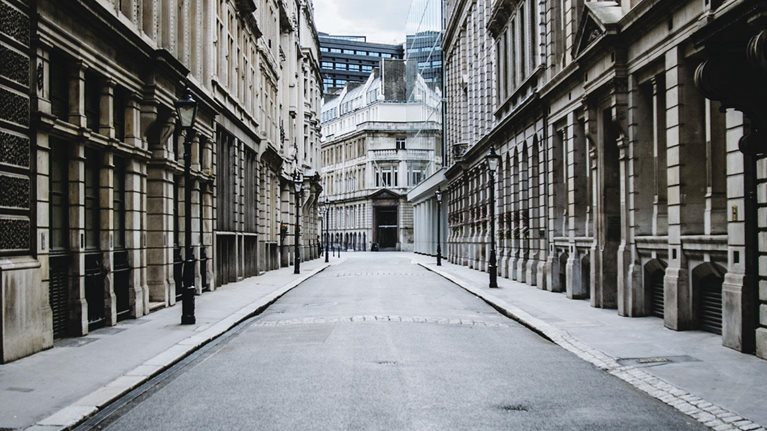We are now living through the most uncertain moment of our times. Many countries have been in lockdown since early March 2020. Even Japan, once a beacon of hope for controlling COVID-19, is now moving toward total isolation. Many political leaders realize that physical distancing might be the norm for at least several months. They wonder how—or if—they can maintain indefinite lockdowns without compromising the livelihoods of their people.
Political leaders aren’t alone in their fears. As the pandemic continues its exponential course, workers in most countries wonder what will become of their jobs when the lockdowns end. Businesses struggling to pay their employees and cover operational costs wonder if they will have clients or customers when they reopen. Banks and investors realize that many companies, especially small and midsize ones, will default and are trying to protect both financial stability and public savings. Meanwhile, governments are working to calculate the magnitude of the shock and sharpening their tools to save economies from collapse. They know that history will judge them by the decisions they make now.
This daunting scenario poses several basic questions. How can we save both lives and livelihoods? Which decisions are best managed by governments? How can they evaluate the risks that experts predict from a prolonged lockdown, such as starvation, domestic violence, and chronic depression—as well as protect jobs, income security, food supplies, and the general welfare of the most vulnerable people among us? How and to what extent should they try to save banks, prevent fiscal ruin, and safeguard future generations?
Governments could address all these questions strategically. In effect, they are caring for two patients who react to the same medicine—physical distancing—in very different ways. The first patient is the public-health system. Physical distancing might cure or alleviate its symptoms but could exacerbate those of the second patient, the economy. This trade-off suggests a physical-distancing strategy for governments: ensuring the health system’s ability to deal with COVID-19 and protecting the economy.
Exhibit 1 shows how different levels of physical isolation affect economic conditions. A recession could occur if faltering demand, restricted supply, and lost income reach critical levels. The differences between scenarios could be tenfold: a country that applies physical distancing in a lax way and ends it too soon could face zero GDP growth, but if the same country imposed a very strict and prolonged quarantine, GDP might plunge by 20 percent. In some Western economies, the latter scenario might increase government control of strategic sectors.

Countries can avoid the worst scenarios if they work quickly along three principal lines of action: first, minimizing the impact of physical distancing on the economy; second, spending deeply to keep it afloat; and third, spending even more to accelerate the crisis recovery and to close historical gaps.
Minimize the economic impact of physical distancing
In a recent article, we showed how different isolation strategies can have different effects on the ability of countries to save both lives and livelihoods. Policies for localized physical distancing at the regional, sectoral, or individual level might have better results than blanket lockdowns of entire countries. The time has therefore come to quantify the impact of lockdowns on people’s livelihoods.
Advanced analytics could help countries estimate—with a high level of confidence—the shock to the economy by aggregating data on power consumption, debit- and credit-card spending, applications for unemployment insurance, default rates, and tax collections. Exhibit 2 estimates the changes in demand for goods and services by using visits to Google services as a proxy. We calculate that the number of these visits in several countries fell by as much as 95 percent during the first two weeks of the lockdowns.

Individual countries that implement localized physical distancing might be able to keep track of how many people are in the streets at any given time and how much economic activity those people generate. But approaches to physical distancing will probably vary a good deal from country to country, depending on how they balance public-health issues with privacy concerns. Countries could plan prolonged lockdowns for the elderly and children and estimate their levels of consumption. They could quantify the number of employees in essential sectors that continue to operate (health, security, food and beverages, agriculture, utilities, and transportation). They could determine which regions or states should remain under complete lockdown and which sectors are operating under strict health protocols in other places. And they could track how many people are working from home in each sector and their contributions to the economy.
This granular level of information might help countries quantify the weekly impact of physical distancing on GDP, productivity, aggregated demand, income loss, unemployment, poverty, and fiscal-deficit levels by region and by economic sector (Exhibit 3). If countries knew all that information, they would know the cost of the lockdowns on the livelihoods of their people.

Spend deeply to keep the economy afloat
Armed with information on the economic impact of physical-distancing strategies, governments can prepare their next moves (Exhibit 4).

To recover from the pandemic’s health and economic consequences, we must uphold the social contract—the implicit relationship between individuals and institutions. The market economy and the social fabric that holds it together will be deeply compromised, or perhaps undermined, if massive numbers of jobs are lost, vendors can’t fulfill their contracts, tenants can’t make their rent, borrowers default at scale, and taxes go unpaid. Governments could therefore quantify the minimum level of income that households need to cover their basic necessities, the minimum level of liquidity that companies need to cover their costs (including payrolls) and to protect their long-term solvency, the minimum liquidity levels that banks need to support defaults, and the minimum amount of money that governments need to supply all those requirements. Let’s examine each of them.
Formal, informal, or independent workers will all have their own particular financial needs. So will vulnerable populations, such as people at higher risk of infection, which might not be able to return to work for some time. Leaders in the public sector should determine the level of support that each population segment requires and the appropriate distribution channels for fast delivery. Familias en Acción in Colombia and Janani Suraksha Yojana (JSY) in India, for example, are conditional-cash-transfer (CCT) programs that support millions of vulnerable people. Such programs could temporarily expand to cover other segments of the population, such as informal and independent workers. It might also be necessary to consolidate databases and information systems and to digitize all payments.
Since revenues have plummeted, many companies require help to safeguard employment. Their needs vary widely among sectors of the economy; professional-service firms, for example, usually have twice as many working-capital days as restaurants do. What’s more, physical distancing will affect different kinds of companies in different ways. As a first move to help them, several countries have already frozen short-term fiscal, parafiscal, and social-security payments. Some are using innovative instruments to irrigate money—for instance, capitalizing national reinsurance agencies to cover most of the expected losses from the new loans required to bridge payroll payments and working capital.
Banks can play a meaningful role during the crisis in two fundamental ways: lending money to companies in distress and recognizing that some companies simply can’t survive. If default rates on current loan portfolios skyrocket, the expected shock to incomes and to supply and demand could compromise the solvency of some banking systems. Besides thinking about loosening solvency and warranty regulations, governments might consider creative solutions, such as distinguishing among banks according to their credit portfolios to strengthen financial institutions’ balance sheets and injecting government-backed convertible loans against their long-term warrants and restructuring targets. (Governments implemented these mechanisms successfully in other financial emergencies, such as the 1997 Asian market crisis, the 1999 Latin American crisis, and, most recently, the 2008 crisis in Europe and the United States.)
Strengthening the balance sheets of banks might not be enough to deal with the aftermath of COVID-19; governments might have to use monetary expansion through debt and equity emissions backed by central banks. Countries with deeper capital markets could not only securitize loans and new instruments but also use the financial strength and long-term view of pension funds and other institutional investors to ease short-term crisis-related pressures on public finance.
Governments shouldn’t be shy about using such instruments extensively if that’s needed to keep economies running. Since such stimuli would have a cost, additional fiscal requirements could complement them in the medium term. To preserve national solvency, governments might also reexamine historical exemptions from taxation.
Spend more to accelerate the crisis recovery and close historical gaps
After countries estimate the size of the stimulus packages needed to help households, companies, and financial systems, they can start designing additional, customized programs to restore demand and accelerate recovery. People who receive direct subsidies to stay at home could gradually return to work as each sector of the economy introduced new health and behavioral practices. Meanwhile, as many workers as possible should receive new job opportunities. To provide them, governments could introduce innovative labor regulations and help companies operate 24/7 under flexible schemes. They might also turn old-fashioned CCT programs into universal-income alternatives linked to new jobs in ambitious, government-led programs for infrastructure, housing, and industrial reconversion. Each country could find its equivalent of Franklin Roosevelt’s New Deal.
Governments may also find it advisable to relax their regulatory regimes to help businesses not only reopen but also grow. Most countries have national, local, and sectoral regulations that were perfectly appropriate before the coming of COVID-19 but will be extremely expensive in the next normal. National programs to eliminate red tape at scale will help a good deal. Speed and flexibility are essential.
Businesses in sectors facing strict physical-distancing policies might need additional long-term capital. Governments could use innovative special-purpose vehicles to inject fresh equity and provide fiscal incentives to attract long-term investors. Businesses receiving that sort of aid should expect to commit themselves to restructuring: rescue packages could promote leaner operations, digital and industrial reconversions, the introduction of new channels, agile organizational structures, and innovative learning techniques. Governments could also ensure that such aid programs encourage competition—poorly designed policies that strengthen oligopolies and threaten the interests of consumers will be costly in the long run.
Although governments should carefully weigh the impact of their aggressive programs against long-term fiscal sustainability, they can play a significant role in restoring demand for goods and services and in fostering investment in new business models. Many initiatives—for instance, accelerating infrastructure projects; fast-tracking private investment to build hospitals, schools, and other social projects; encouraging urban renewal and very large housing projects; sponsoring the development of digital clusters to digitize government services; easing investment conditions to take advantage of global supply chains; capturing near-shore production opportunities; promoting large agribusiness developments; and stimulating exporting—could promote those goals. It is time to spend—but wisely.
The COVID-19 pandemic is a global tragedy. But that shouldn’t—and needn’t—prevent us from finding innovative ways to accelerate progress. It would not be the first disaster to do so. This may be the right time to introduce fiscal, labor, pension, social, environmental, and economic reforms to speed up progress toward sustainable development. Ameliorating poverty, diminishing inequality, and protecting the environment could figure prominently in global and national agendas. Governments, companies, and social organizations could act quickly to promote full financial inclusion, the transition to cashless economies, and the provision of better and more efficient social and public services. Political leaders might condition access to massive economic-stimulus programs on efforts to reduce informality, rethink healthcare systems, digitize entire sectors of the economy to accelerate productivity, and encourage digital innovation—especially high-quality public education with universal internet access.
Governments ought to act quickly. The first step is to understand the economic impact of the crisis in both the short and medium terms. Second, governments could inject the minimum viable liquidity to keep markets alive. Finally, they could expedite ambitious fiscal and monetary policies to accelerate recovery. In most economies and markets—national and international alike—ratios of debt to GDP will likely rise. Confidence that tax frameworks will gradually support next-normal debt levels will be necessary.
Once the pandemic ends, countries around the world will probably find themselves more in debt than ever. If they restructure and innovate, attract investment, and increase their productivity, a new era of human development will begin. But if they spend haphazardly and imprudently, economic and social development might falter for decades to come. The societies, governments, institutions, companies, and people of the Earth now face basic choices. Let’s hope they think about them seriously.


